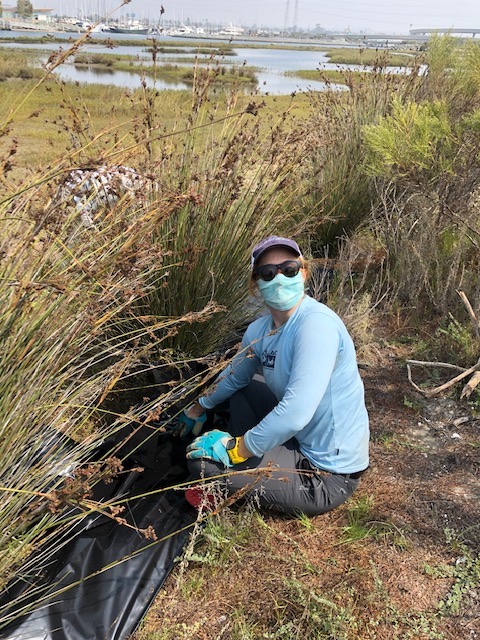The Americans with Disabilities Act (ADA) was a landmark piece of civil rights legislation prohibiting discrimination based on disability. Growing up I was not aware of the ADA and its implications until I attended the University of Illinois, which strives to ensure “equal access and an inclusive environment for all individuals.” Before the first day of classes, I attended the inaugural address focused on accessibility and the importance of it within the context of higher education. Moving through life in an able body with an able mind was something I took for granted up until that point, but it was not until this year, when I began my fellowship with the Port of San Diego, that I began to think more inclusively and considered accessibility in my daily work.
As a trustee of public lands in California, the Port of San Diego’s mission is to protect the Tidelands Trust resources in San Diego Bay by providing economic vitality and community benefit through a balanced approach to the maritime industry, tourism, water and land recreation, environmental stewardship, and public safety.
For the port, the importance of understanding sea-level rise and its potential impacts on state-granted tidelands in San Diego Bay is paramount. In fact, California Assembly Bill (AB) 691 required state lands grantees, like the port, to address the impacts of sea-level rise as a management priority. After years of research and collaborative work with multiple stakeholders and local and state agencies to analyze coastal impacts from sea-level rise, the port submitted their “Sea Level Rise Vulnerability and Coastal Resiliency Report” to the State Lands Commission in 2019. The report includes:
- Information on best available science to assess the vulnerability of projected sea-level rise on port tidelands,
- Maps of areas that may be potentially impacted by projected sea-level rise,
- Estimates of the financial costs of impacts on granted trust lands, and
- How the port proposes to address projected sea-level rise to protect and preserve natural and built environment resources and facilities on trust lands.
While the port’s report met all the requirements of AB 691, it did not meet ADA web accessibility requirements of AB 434 (legislation that came into effect in 2019), which requires all California state agencies to make web content more accessible to people with disabilities.

Sea Level Rise Vulnerability & Coastal Resiliency Report
The task of making the the report web-accessible was given to the port’s Environmental Conservation California Sea Grant State Fellow, Dulce Cortez, and me. Dulce and I began learning more about web accessibility and the ADA.
Our first challenge was to figure out what constitutes web accessibility, which is the ease of use of a computer system to all people, regardless of disability or impairment. Our second challenge was to then make the report web accessible. This included:
Reviewing tables for simplicity and issues with color contrast,
Adding alternative (alt) text to figures and photos, and
Making sure there was a logical reading order for built-in screen readers.
These were some of the necessary steps to make the report accessible for as many people as possible, and I began to realize how important and impactful these simple changes can be for people of differing abilities. For example:
- Changing the colors of table backgrounds allows people with colorblindness or poor vision the ability to see the data being presented, such as sea-level rise projections for San Diego Bay.
- Simplifying tables by removing merged or nested cells could improve understanding for people who use screen readers.
- Adding alt text (a text description) to a map of the San Diego tidelands could help create a mental image for people without sight of how rising seas may impact the bay in the future.
- Identifying the appropriate reading order of the report would allow for screen readers or other assistive technologies to “read out loud” or provide braille output on information, such as the economic impacts and opportunities of becoming a more adaptive and resilient agency and region.
Dulce’s and my work culminated in the successful revision and submission of the report to the State Lands Commission, which was accepted and is now published online, available to all Californians. A task designed to improve the accessibility of a single document permeated into all other assignments I completed during my fellowship, and Dulce and I presented our work on document accessibility to the port’s Planning, Environment, and Government Relations Division. Working on this task was at times all-consuming, difficult, but also extremely rewarding.
One of the most important takeaways was to begin every project with accessibility in mind – by incorporating these ideas from the beginning, agencies can save time and be sure their product is accessible to everyone. I am very grateful to have become more aware of the ADA within the context of coastal policy and planning, and look forward to incorporating accessibility into projects in the future so everyone can have the opportunity to better understand the natural world.
